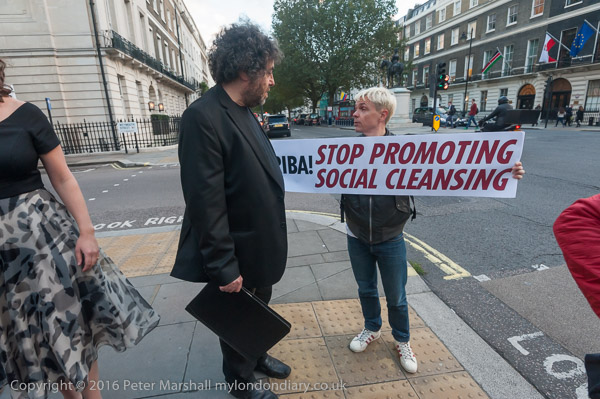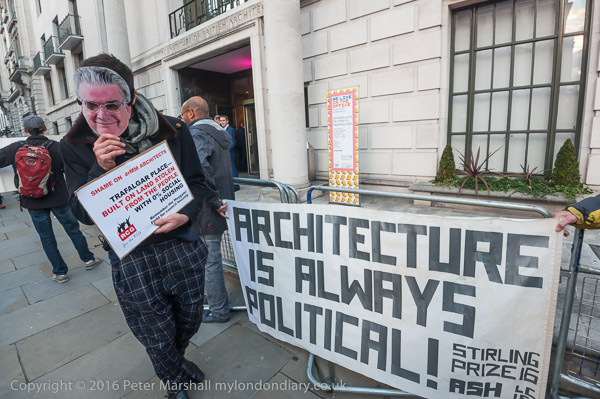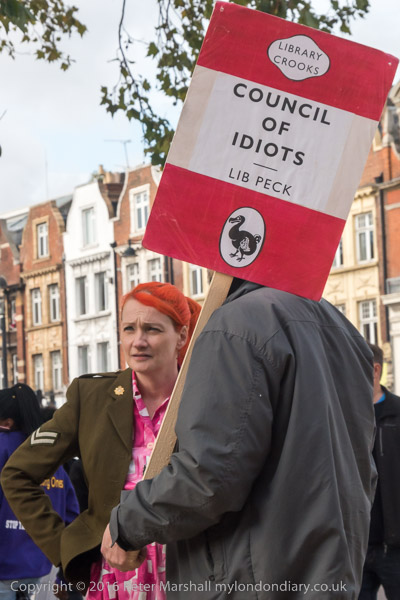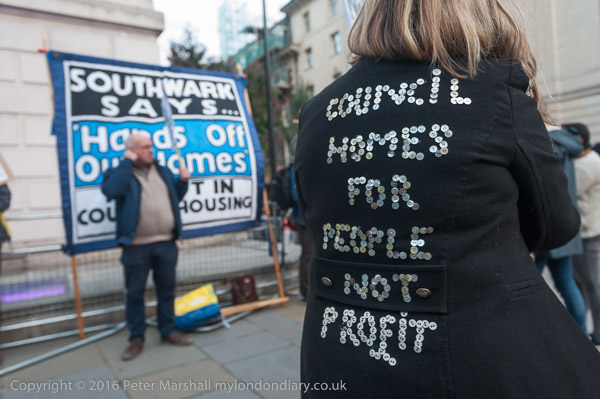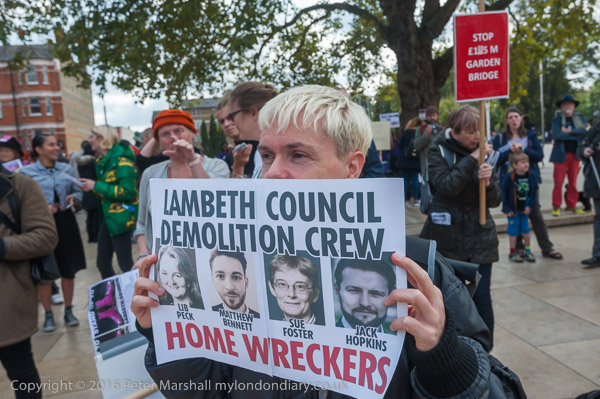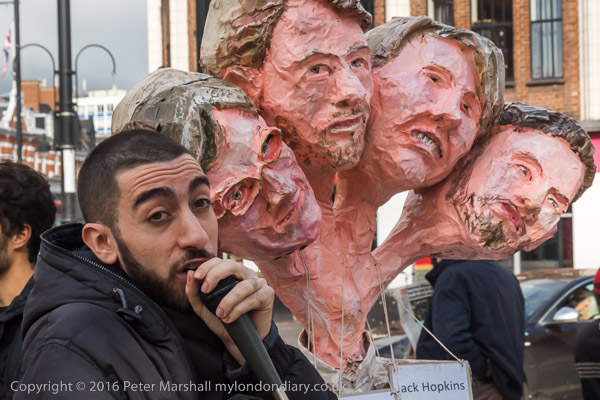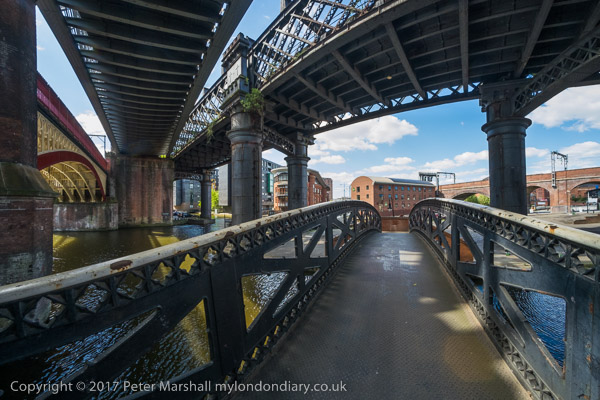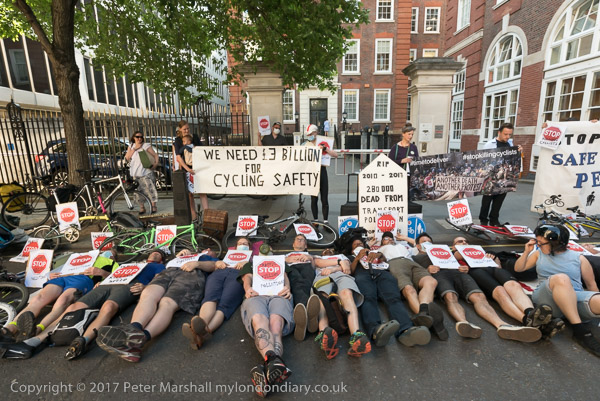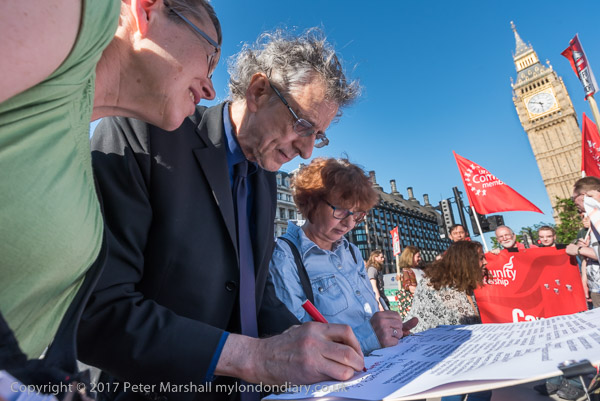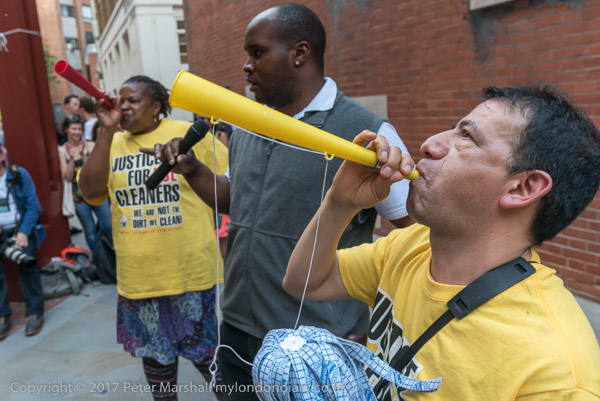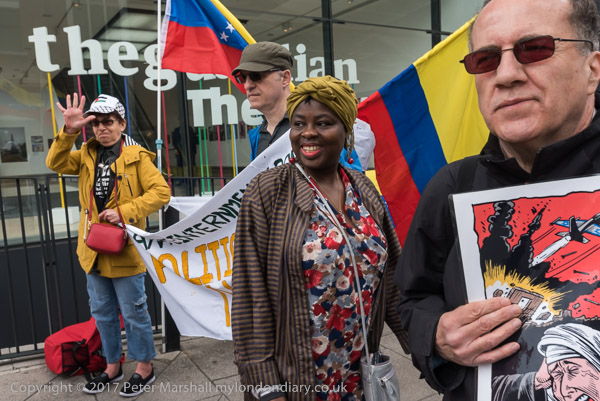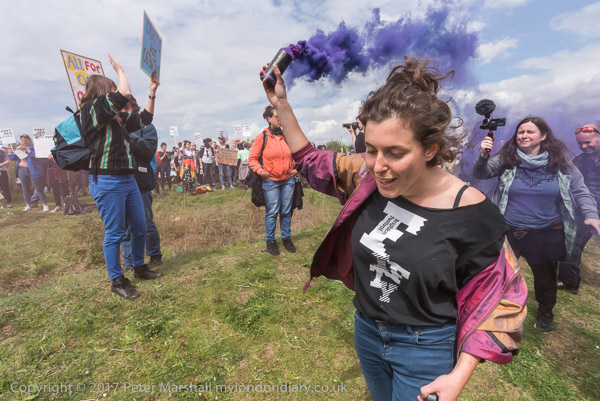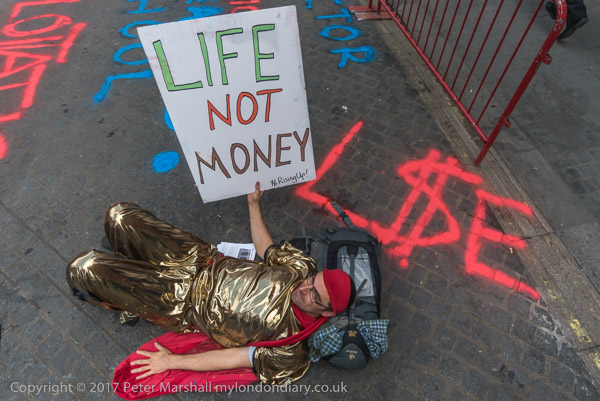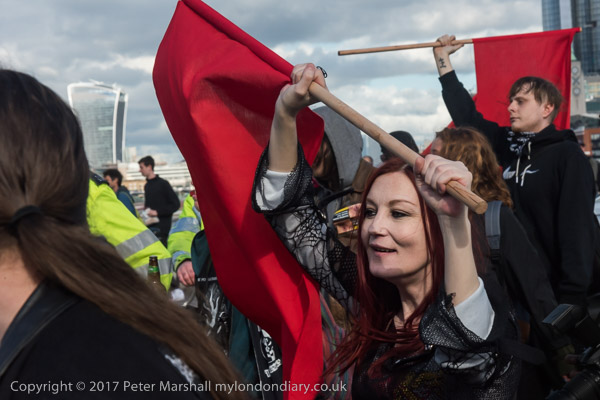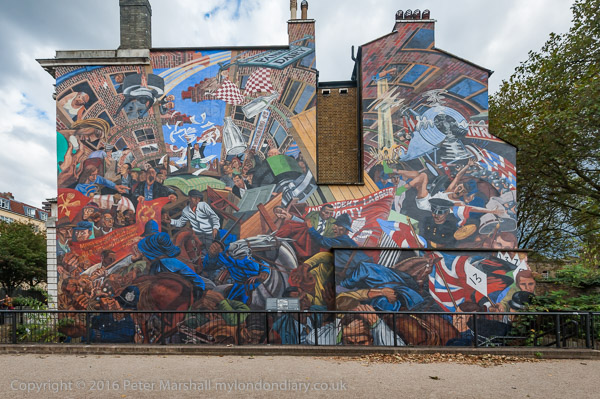
I wasn’t of course at the ‘Battle of Cable St’, commemorated in a fine mural, as it took place nine years before I was born, but there are still a few who were there around, notably Max Levitas, who not only came to the rally, but spoke at it.
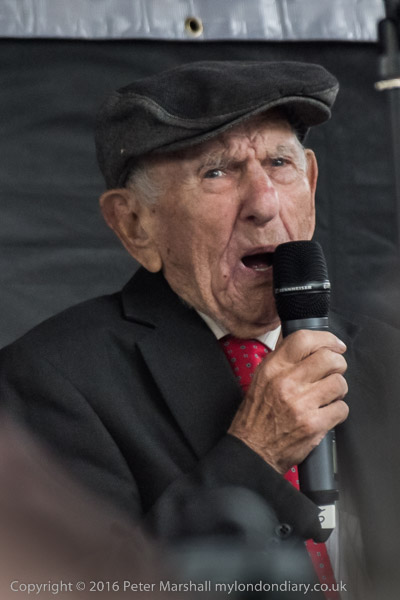
There was such a crush in front of the stage that I couldn’t get close enough to really see him, and was photographing over people’s shoulders and between heads, straining on tip-toe, and even taking some with camera held in the air, though on the D810 where the screen doesn’t tilt the Live View image is hardly visible in bright conditions. It was bright where I was standing, but not particularly on the stage where Max, who I’ve met number of times before, most recently just after his 100th birthday in June 2015, was sitting to speak. If his legs were a little weak at 101, his mind and voice were still strong. I needed ISO 3200 to combat camera shake, working with the lens wide open at 200mm (300 equiv) 1/320 f5.6 – though I found I needed to overexpose a little (+0.7) to get a decent histogram.
This is a fairly extreme crop, even from that 300mm view, taken with the camera in landscape orientation and cropped to portrait and then some. I only went into that rally when Max was speaking and left as he finished, though I had photographed other speakers elsewhere on the day. There were plenty of other speakers, but more interesting things were happening outside.
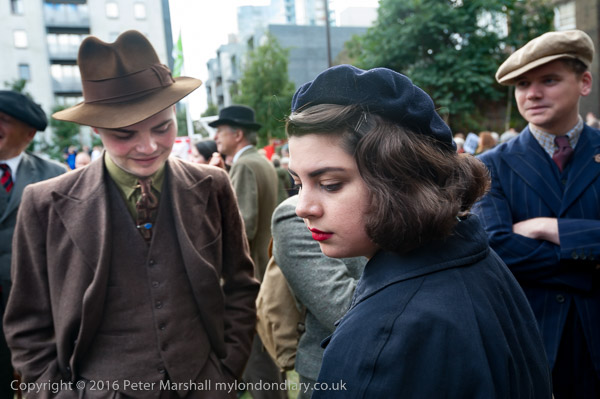
I’d started the day in ‘Itchy Park’, now Altab Ali Park, where some of those attending did looks rather more like the 1936 originals, and although I photographed as always now in colour, I was pleased to be able to give the image just a little of a hand-coloured look. There were plenty of speeches before the march, including by East End historian David Rosenberg, who I’ve listened to talking about Cable St on various occasions, and TUC General Secretary Frances O’Grady who is someone I always enjoy photographing.
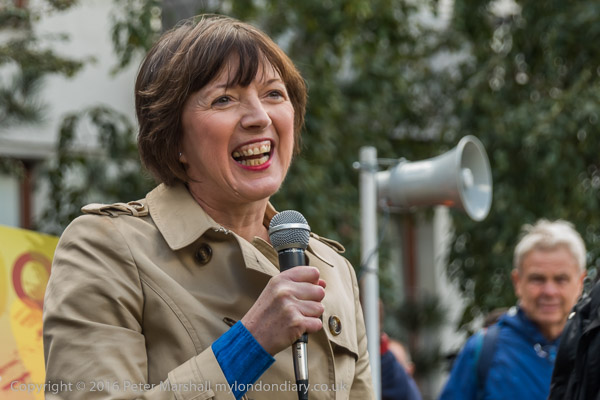
The march itself was something of an anti-climax, and disappointing in that for much of its route the march, celebrating an event when people really did show that the streets were ‘Our Streets’ marched along the pavements or cycle path instead. I’d gone on ahead on Cable St and so missed the only real battle of the day, when anarchist groups defied the stewards and police and insisted on marching on the road.

I’d gone ahead of the march to meet up with Class War who I had been told would be at the Cable St mural, setting up there for a rally outside the main rally in the park beyond, where they were joined by other autonomous groups including London and Merseyside Anti-Fascists, 161 On Tour, Hunt Sabs and the Italian Communists for a celebration with rather more panache and colour and better music.
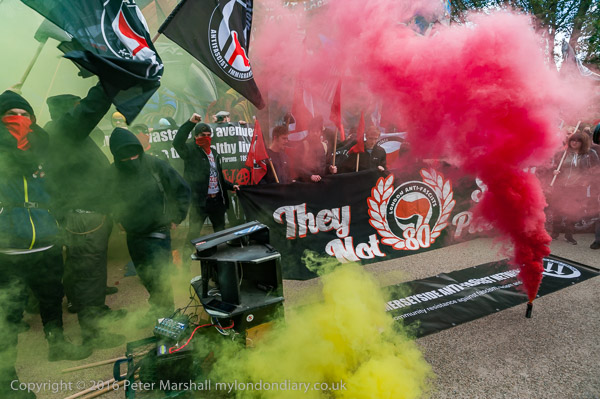
Cable St has become a legend of the Labour movement. It’s perhaps worth pointing out that it wasn’t a fight with the fascists but with the police, that the Labour Party told people not to go, and the fighters were mainly the Jewish population of Whitechapel, Irish dockers and the Communist Party. And that the East End itself was full of fascists, with Bethnal Green just up the road a particular stronghold.
So that party outside in front of the mural really had more right to celebrate than Jeremy Corbyn and the other Labour Party members crowding on to the stage and into the park next door. And although one march was stopped, Mosley’s real defeat was not here but south of the river a year later, the Battle of Bermondsey on 3rd October 1937.
